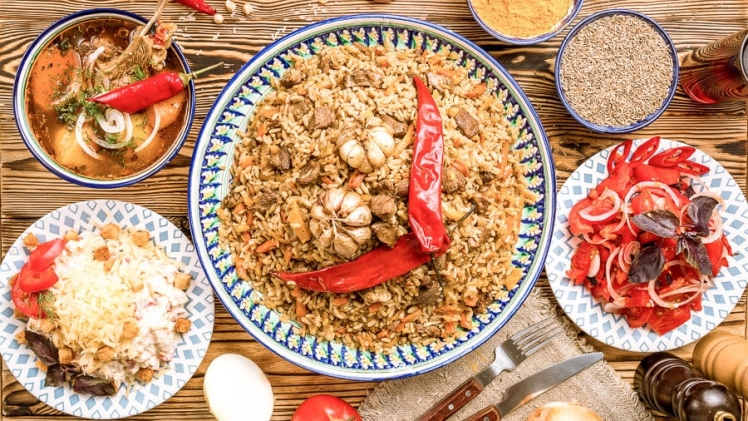When Sunil Kumar packed up his family to leave their small spice shop in Uttar Pradesh, India and emigrate to America, he never dreamed that their business would eventually become the number one distributor of organic wholesale and bulk herbs and spices in North America. The Kumar family did not have a business background. They came from a farming family in the small Indian village of Lisora, where they had opened a spice shop in 1980 to serve their small community.
By 1984, their spice shop was thriving, and they decided to move to the United States. They made their new home in McKinney, Texas, and continued to travel back and forth between India and the United States to run their company, which would eventually become known as Spicy Organic. Little did they know that their family business would grow into a global operation.
They have now created strong relationships with over 10,000 farmers and growers, which was no small feat. It took many sacrifices and much hard work. The family has always remained loyal to their mission to provide the highest quality organic spices and herbs to Indians at home and abroad. The spices and herbs they source from India and around the world allow the Indian diaspora abroad to continue to have access to proper ingredients required for Indian dishes without sacrificing quality or taste. In addition, the popularity of Indian cooking has exploded in recent decades, and Indian spices are more popular than ever among the general North American population.
When the Kumar family arrived in Texas in the 1980s, it was the perfect time to establish a spice company centered around Indian spices. The Indian community in North America did not have access to the plethora of ingredients they do today. At the time, the market was very undersaturated and provided a vast opportunity for Spicy Organic to establish its presence in the United States.
Features and Evolution of Indian Cuisine
Indian cuisine is known for its aromatic spices, intense colors, and complex, well-balanced flavors. From the colorful mango chutney to hearty biryani to rosewater-infused desserts– Indian food is a beautiful sight to behold. Food is at the heart of Indian culture. With more than 5000 years of tradition, it brings together the family and is meant to be shared.
With a rich history influenced by different cultures and a population of over 1 billion people, it’s impossible to reduce Indian cuisine to a few dishes. When a westerner thinks of Indian food, what first comes to mind is often chicken tikka masala or naan bread. However, this is barely scratching the surface of what makes up the rich culinary tradition of India.
Different regions of India generally have their own distinct ingredients, spice blends, and styles of preparing food. Religion and cultures India has come in contact with have also helped shape the Indian cuisine we know today. Muslims tend to avoid pork while Hindus avoid beef, and many Hindus, Jains, and Buddhists avoid meat altogether. India’s Ayurvedic tradition also plays a large role in the cuisine, incorporating many spices and herbs that contain powerful medicinal properties.
North Indians tend to consume more dairy, meat, samosas, and flatbreads than people in other regions. West Indians include fish and coconut more often in their cooking and are well known for their chutneys. Eastern dishes tend to have a lighter spice profile than that of other parts of India. They are famous most especially for their delicious desserts. South India is known for its dosas, which are thin lentil-based crepes that are often are filled with chutney, vegetables, or other ingredients. There is so much more to discover within each region of India, and the food is as multidimensional as the culture itself.
Indian cooking is centered around spices like chili pepper, black mustard seed, ginger, coriander, cardamom, cinnamon, clove, saffron, star anise, cumin, and turmeric. Ginger, garlic, and onions are also staples in Indian households. “Masala” means spice blend, and each region has its own distinct spice blends. Garam masala is a spice mix that forms the basis of many Indian dishes. There are as many recipes for Garam masala as there are cooks. It usually includes cinnamon, clove, black cardamom, cumin, black pepper, coriander, and star anise. Indian desserts often include rose water, nutmeg, cardamom, and saffron.
With a more than 5000-year history behind Indian food, India’s cuisine has been influenced by religion, trade, invasions, colonialism, and globalization. Islamic and Hindu traditions have left their mark on Indian cuisine, along with Persian, British, and Portuguese influence.
Interestingly enough, chiles, red peppers, potatoes are not native to India. Neither are peas, cauliflower, cabbage, carrots, or tomatoes. The Dutch brought potatoes to India in the 1700s, and they are now a staple in India, featured in dishes like Aloo Gobi. We often associate tomatoes with Italian cuisine. However, tomatoes are not native to Europe but South America. They first came to Southern Europe and were eventually brought to India by the British colonists. India had an enormous influence over Asian and European food through the spice trade as well.
Dedication to Pure Ingredients
Sunil Kumar and his family have allowed many Indian families and businesses to experience the flavors of home in North America. With over 40 years in the business, they have always adhered to the high standards they set in the beginning. Their staff is careful to source ingredients from organic farmers and growers they establish strong relationships with. They always searching for new ingredients to add to their collection, most recently adding organic essential oils that can be used for aromatherapy purposes.
From a small spice shop in the village of Lisora to an international business, Spicy Organic remains true to their values that led to their success. Never wavering from their belief in providing ethically-sourced, organic, and pesticide-free ingredients to Indians at home and abroad, they continue their 40-year legacy of excellence.

